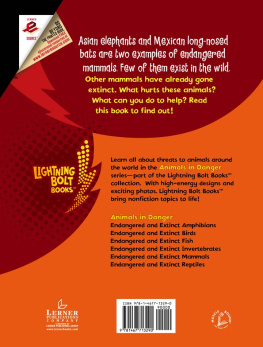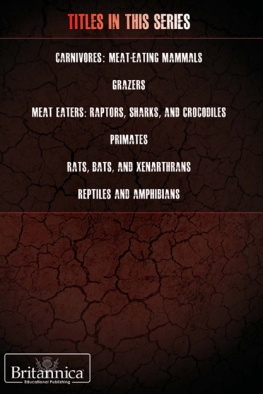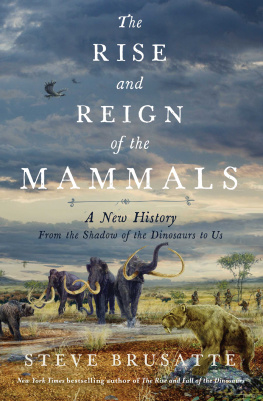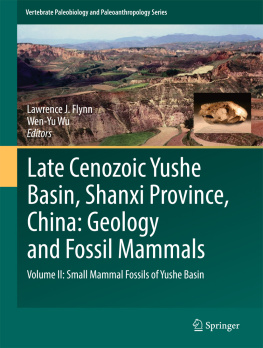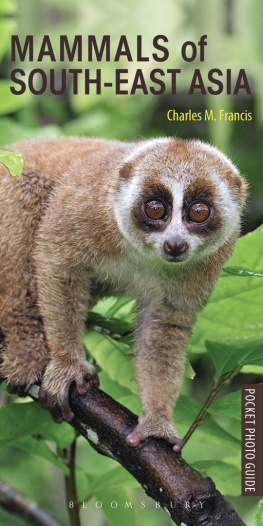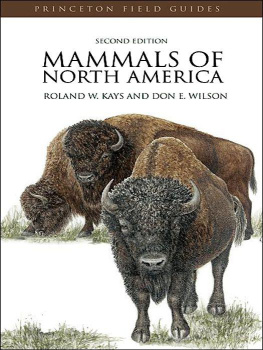Horned Armadillos and Rafting Monkeys
Horned Armadillos and Rafting Monkeys
The Fascinating Fossil Mammals of South America
DARIN A. CROFT
Illustrated by Velizar Simeonovski
Life of the PastJames O. Farlow, editor



This book is a publication of
Indiana University Press
Office of Scholarly Publishing
Herman B Wells Library 350
1320 East 10th Street
Bloomington, Indiana 47405 USA
iupress.indiana.edu
2016 by Darin A. Croft
All rights reserved
No part of this book may be reproduced or utilized in any form or by any means, electronic or mechanical, including photocopying and recording, or by any information storage and retrieval system, without permission in writing from the publisher. The Association of American University Presses Resolution on Permissions constitutes the only exception to this prohibition.
The paper used in this publication meets the minimum requirements of the American National Standard for Information SciencesPermanence of Paper for Printed Library Materials, ANSI Z39.48-1992.
Manufactured in China
Cataloging information is available from the Library of Congress.
ISBN 978-0-253-02084-0 (cloth)
ISBN 978-0-253-02094-9 (ebook)
1 2 3 4 5 21 20 19 18 17 16

TO ANYONE WHO HAS EVER WONDERED
WHAT A NOTOUNGULATE LOOKED LIKE.
Here is indeed an interesting mixture of creatures, and it takes only a modicum of human curiosity to want to know their history and to learn, as far as possible, how that mixture arose.
GEORGE GAYLORD SIMPSON,
Splendid Isolation: The Curious History
of South American Mammals
Contents
Part I
Early South American Phase and Trans-Atlantic Dispersal Interval (TADI)
Part II
Late South American Phase
Part III
The Great American Biotic Interchange (GABI) and the Interamerican Phase
Preface
SOUTH AMERICA HAS A RICH AND FASCINATING FOSSIL MAMMAL record, the best among Southern Hemisphere continents. Unfortunately, most of these mammals are virtually unknown to the general public and even many paleontologists. One reason for this is that many varied and abundant groups left no living representatives or even close relatives. This makes it is difficult to make definitive statements about the habits of these mammals or even imagine what they may have looked like. Because most of these groups were restricted to South America, only a few museums outside that continent have specimens of them on display, and this has further impeded awareness of them elsewhere.
I myself was almost completely ignorant of the marvelous mammals of ancient South America until I undertook a Ph.D. thesis studying extinct species from Chile. Once I became familiar with them, I was struck by how difficult it was for friends and family to relate to the animals I was studying. I would describe these animals as small hoofed mammals that were not closely related to cows or horses and may have resembled large rodents more than anything else. That description usually just confused things or resulted in a shift in conversation. I realized that it was impossible for most people to identify with these animals without accurate reconstructions of how they may have appeared in life and accessible information about the roles they filled in ancient ecosystems.
The aim of this book is to provide the reader with a compelling but understandable summary of the extraordinary diversity of extinct South American mammals. I begin by briefly discussing the geography and main groups of South American mammals in the first two sections. I then highlight several species (primarily mammals) at each of 15 particularly well known paleontological sites. These sites were chosen because they span the so-called Age of Mammals (the Cenozoic Era, the last 66 million years), are distributed throughout much of the continent, and have produced important fossils of extinct species. The appendices of this book provide additional information about these sites and their extinct animals. list the mammal species that have been found at each of the sites highlighted in this book. These lists include relevant citations from the scientific literature.
). Intended meanings of scientific names were taken directly from the original publication on the species, though for many species (particularly those named by Florentino Ameghino), the author provided no explicit justification for why the name was chosen. In such cases, I have attempted to deduce the intended meaning based on Greek and Latin roots and other information. Most reconstructions are accompanied by at least one photo of a fossil or modern specimen (or cast) that illustrates a particular aspect of anatomy discussed in the text. Further Reading includes an annotated list of relevant publications that should be consulted for additional information about the sites, species, and other topics discussed in this book. The glossary can be consulted for definitions of terms highlighted in bold in the text.
The life reconstructions of extinct species in this book were skillfully executed by Velizar Simeonovski and result from extensive discussions between Velizar and me about the possible appearance and habits of each species. In many cases, these reconstructions are based on closely related species that are known from more complete remains rather than the species recorded at a particular site. For each species, we inferred external characteristics such as hair color and length based on its presumed ecological adaptations as well as its living relatives (when possible). Each species has been depicted in an appropriate environment in terms of climate and general vegetation structure (e.g., forest or savanna), but the plants are not necessarily those that would have been present in the area at the time.
It is my hope that the walk through time provided by these snapshots of ancient South American mammals and their communities will engender a wider and deeper appreciation of the splendidly unique mammals that once called the continent home.
Acknowledgments
THIS BOOK WAS MADE POSSIBLE BY THE NATIONAL SCIENCE Foundation, which has supported my field and lab research and the development of the life reconstructions featured in this work. If you enjoyed reading this book and learning about South American mammals, please be vocal in your support of science in general and agencies such as the National Science Foundation in particular. Thanks also go to the editors with whom I worked at Indiana University Press, Robert Sloan and James Farlow, for providing ideas and input and for helping to bring this book to fruition.
Part of the inspiration for this book was George Gaylord Simpsons Splendid Isolation: The Curious History of South American Mammals. This outstanding review of ancient South American mammals is still a great read today.
I am indebted to John Flynn and Andy Wyss for taking me on as a graduate student and for introducing me to the fascinating world of South American mammals. Since then, I have had the good fortune to spend many weeks with John and Andy hunting fossils in Chile, and they have continued to serve as valuable mentors and role models for me as my career has developed.
Next page

